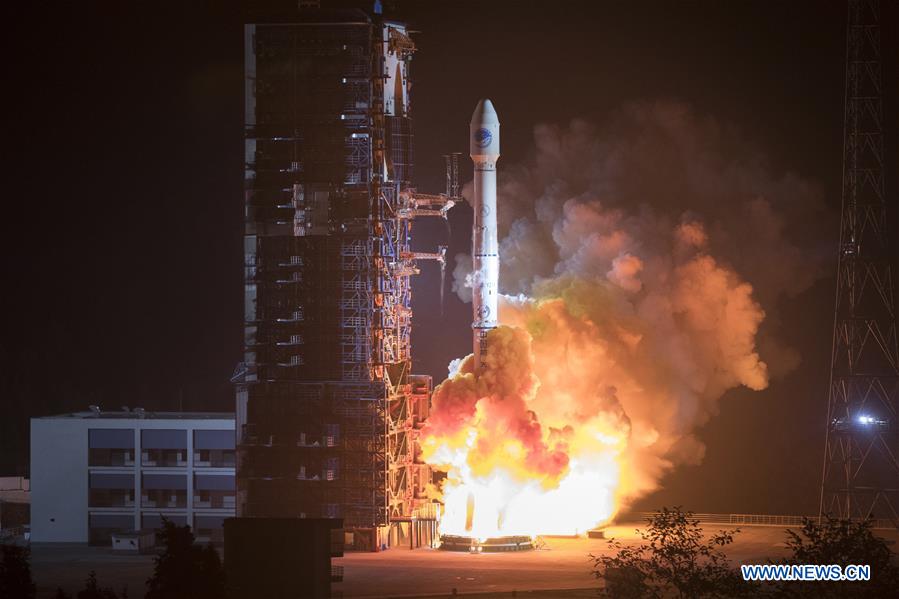China to launch 10 BeiDou satellites in 2019
China will send 10 satellites to join the BeiDou Navigation Satellite System (BDS) through seven separate launches this year, the China Aerospace Science and Technology Corporation (CASC) announced Tuesday.
China will send 10 satellites to join the BeiDou Navigation Satellite System (BDS) through seven separate launches this year, the China Aerospace Science and Technology Corporation (CASC) announced Tuesday.

China sends two new satellites of the BeiDou Navigation Satellite System (BDS) into space on a Long March-3B carrier rocket from the Xichang Satellite Launch Center in Sichuan Province at 2:07 a.m. on Nov. 19, 2018. [Photo/Xinhua]
The launches will help complete the BDS global network by 2020, said Shang Zhi, director of the Space Department of the CASC, at a press conference, where the Blue Book of China Aerospace Science and Technology Activities was released.
According to the blue book, a total of 18 BeiDou satellites were launched in 2018, marking the completion of the BDS-3 primary system. The navigation system has started to provide global service.
As an important achievement during the past 40 years of reform and opening-up, the BDS has also been widely used to serve China's economic development.
More than 6,000 fishing boats in the eastern province of Zhejiang have been installed with the BDS ship movement monitoring system, which helps them improve positioning accuracy and promptness, according to the blue book.
About 6.17 million vehicles, 35,000 postal and express delivery vehicles and 80,000 buses in 36 major cities have been installed or are compatible with the BDS. The system is also used in homemade civilian aircraft, it says.
China Post has equipped its postal vehicles with 30,000 BDS terminals and connected them with the BDS-based information management platform. E-commerce giant JD.com also arms 1,500 logistics vehicles and 2,000 couriers with smart BDS terminals, according to the blue book.
The BDS is also widely used to serve the country's agricultural production. An automatic driving system for agricultural vehicles has been put into large-scale application across the country, while the farming supervision platform based on the navigation system has served more than 50,000 farm machines and facilities.
China began to construct its navigation system, named after the Chinese term for the Big Dipper constellation, in the 1990s and started serving the Asia-Pacific region in 2012.
By the end of 2018, there were a total of 33 BDS satellites operating in orbit, including 15 BDS-2 satellites and 18 BDS-3 satellites.
Compared with the BDS-2 system, the technologies of the BDS-3 system have been greatly improved. The communications, data transmission, and ranging among satellites can be achieved through inter-satellite links.
The system's signals and positioning accuracy have also significantly improved. The BDS-3 satellites are equipped with high-precision rubidium and hydrogen atomic clocks independently developed by China.
The positioning accuracy of the system has reached 10 meters globally and five meters in the Asia-Pacific region. Its velocity accuracy is 0.2 meters per second, while its timing accuracy stands at 20 nanoseconds.

